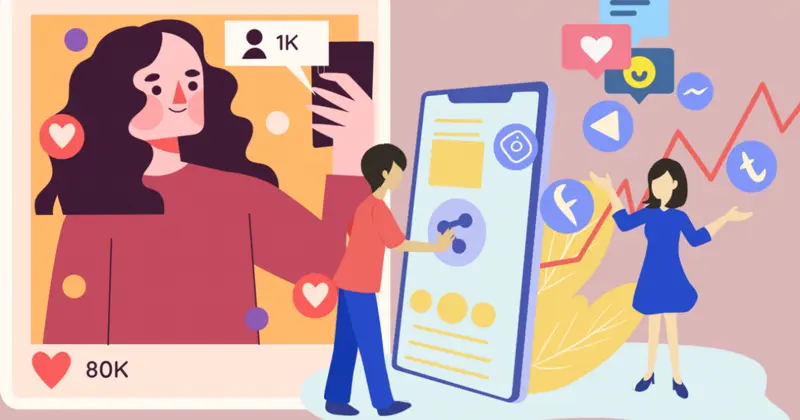AI-powered tools are set to revolutionize online communication, influencing content creation, image production, and even social media interactions.
As businesses embrace these innovations, they must also navigate the risks and ethical considerations associated with AI-generated content.
Content creation: Enhancing efficiency, but at what cost?
One of the most significant applications of AI in marketing is content generation.
Tools like ChatGPT can rapidly produce blog posts, website copy, and other text-based materials to support SEO strategies. These AI-generated outputs are coherent and well-structured, making them appealing for businesses looking to scale their content production.
However, there is a fundamental difference between “competent” and “high-quality” content. While AI-generated articles may serve basic informational needs, they often lack originality, depth, and the human touch that engages readers. This could lead to an influx of generic content flooding the internet, making it harder for brands to stand out.
Moreover, relying too heavily on AI for content creation raises concerns about credibility and authenticity. Businesses should balance AI-generated materials with human creativity to maintain a unique and compelling brand voice.
While AI can streamline content production, it cannot replace the strategic insights and emotional intelligence that human writers bring to the table. Another growing trend is the use of AI tools like DALL-E for image creation.
These systems generate visuals based on text prompts, offering businesses an efficient way to produce graphics for marketing materials. However, much like AI-generated text, these images often lack refinement. Common issues include distorted details, unnatural facial features, and awkward compositions.
Additionally, AI-generated visuals raise copyright and ethical concerns. While the creators of AI-generated images technically own their outputs, legal disputes are emerging over the use of copyrighted artwork in training datasets.
Some artists argue that AI tools effectively replicate their styles without permission, leading to potential legal battles over intellectual property rights. Despite these challenges, AI-generated images can still be valuable for brands, particularly for quick content creation.
However, businesses should be mindful of the legal landscape and ensure they are using AI-generated visuals ethically.
A New Ethical Dilemma
AI tools are also being used to automate social media engagement, with some individuals leveraging ChatGPT to craft “thought leader” tweets and online personas. While this can enhance productivity, it also raises ethical concerns about authenticity.
For instance, if an AI-generated account gains a following based on automated content, how will followers react when they discover that the posts were not written by a real person? This could damage credibility and trust, especially for brands or influencers that rely on personal connections with their audiences.
A more alarming scenario is the potential for AI-generated content to be weaponized. Imagine an AI system churning out thousands of negative reviews or complaints about a competitor, influencing public perception in unethical ways. This kind of AI-driven manipulation could become a growing issue, particularly as AI tools become more advanced and harder to detect.
AI-Generated 3D Models
The latest AI advancements now extend beyond text and images to 3D model generation. Tools like OpenAI’s Point-E allow users to create 3D objects from text prompts, a development that could transform industries such as gaming, virtual reality (VR), and e-commerce.
As digital experiences become more immersive, businesses will increasingly rely on 3D models for AR/VR applications. However, creating high-quality 3D assets traditionally requires specialized expertise. AI-driven tools could democratize access to 3D modeling, enabling businesses to generate virtual products and environments with minimal effort.
The long-term implications are exciting—imagine a future where users can verbally describe an object, and AI instantly generates a fully interactive 3D model. While current AI-generated 3D models may still lack precision, ongoing improvements could unlock unprecedented creative possibilities.

“OpenAI open sourced Point-E, a machine learning system that creates a 3D object given a text prompt, can produce 3D models in one to two minutes on a single Nvidia V100 GPU.” – TechCrunch
AI tools will continue to evolve, offering new efficiencies while also introducing fresh challenges. As these technologies improve, businesses must carefully consider how they integrate AI into their marketing strategies. The key is to strike a balance—leveraging AI for efficiency while ensuring that content remains authentic, creative, and ethically produced.
While AI-generated content may never fully replace human ingenuity, it will undoubtedly become an essential tool in digital marketing. The brands that succeed will be those that embrace AI’s potential while maintaining the integrity and uniqueness that set them apart.
For more insights into AI’s impact on digital marketing, visit Smartcom Agency’s website for regular updates Which seems a little scary for a digital agency, but it could also be the true ‘unlock’ that shifts these tools into entirely new territory.
Hopefully the information that Smartcom Agency provides above can help you gain more useful marketing knowledge. Don’t forget to visit Smartcom’s news for weekly updates.
Cre: Social Media Today







